Katalon Recorder Review and Tutorial (Selenium IDE ++ for Chrome and Firefox)
When Firefox, starting with version 55 of Firefox, ceased to support Selenium IDE, millions of testers and developers were faced with the fact that the usual course of work on automated testing was broken, which caused considerable concern among them. Fortunately, development in this area continued, and not so long ago, the Katalon team introduced the Katalon Recorder , a tool that was developed as an alternative to the Selenium IDE.
Katalon Recorder is supported by the latest versions of Firefox and Chrome (which will also be supported by later versions) and can be added as an extension for these browsers. This tool is an excellent and free alternative to Selenium IDE, as well as other similar open source frameworks.
Katalon Recorder is a convenient and powerful tool that supports the ability to record test scripts, in which the main features of Selenium IDE were portrayed for Chrome and Firefox.
The image below shows that all the basic functions of the Selenium IDE are also available for Katalon Recorder .
')
In fact, Katalon Recorder supports two additional frameworks: Robot Framework and Katalon Studio. In addition, this tool is compatible with the Groovy programming language.

Katalon Recorder is a great helper for developers whose work is largely dependent on Selenium IDE. It has a powerful integrated development environment for recording, debugging, and playing test scripts in Chrome and Firefox.
Below are download links for Katalon Automation Recorder for Chrome and Firefox:
Chrome Web Store
Firefox Add-on Store
This tool is easy to install. The following steps describe how to do this:
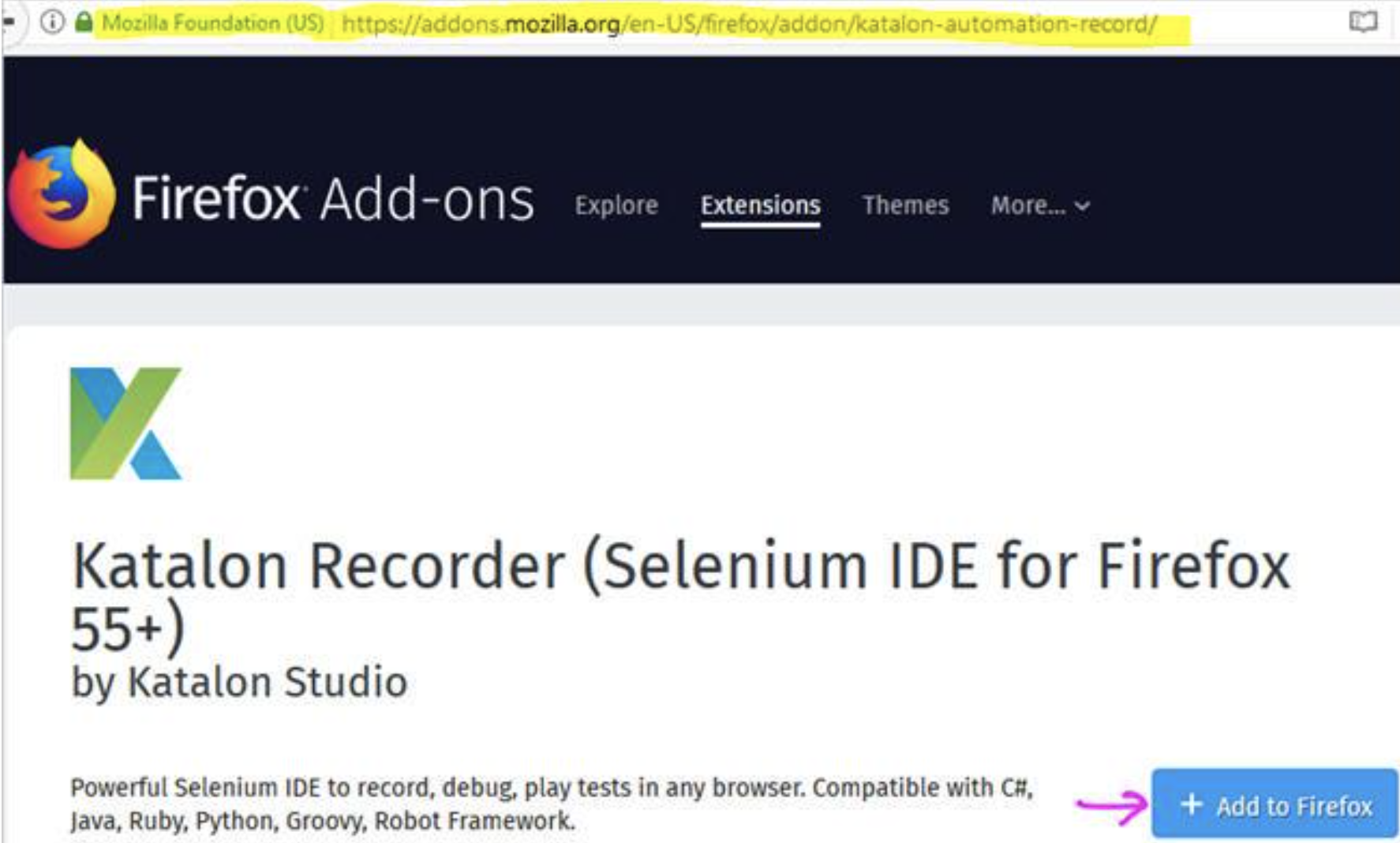
Click the “Add to Firefox” button, as shown in the above image, and shortly Katalon Recorder will appear on the toolbar of your Firefox browser (installation takes less than 10 seconds).

It looks like this:
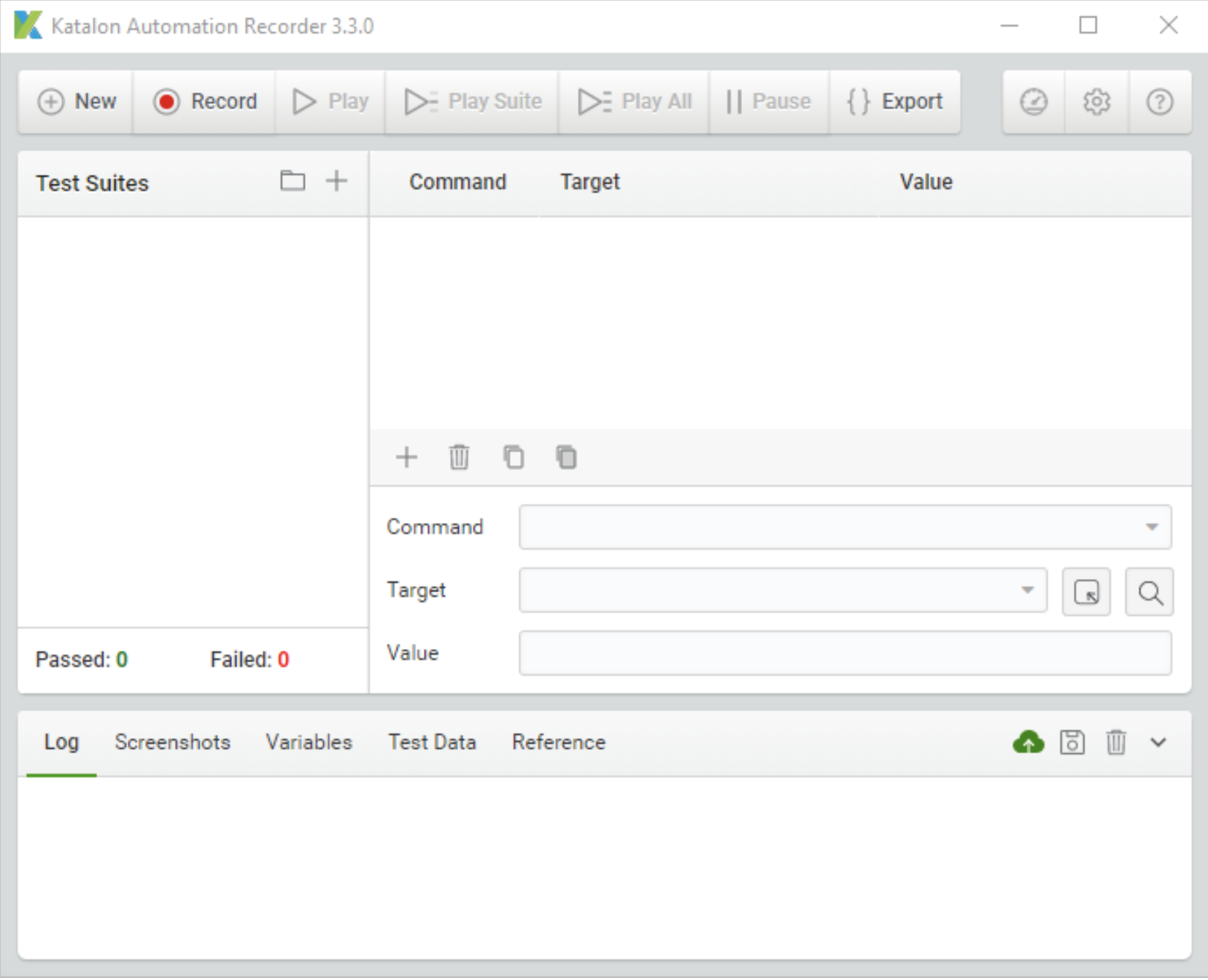
Short presentation
Click the New button and specify the name of the new test case in the dialog box. Then, click “OK”.
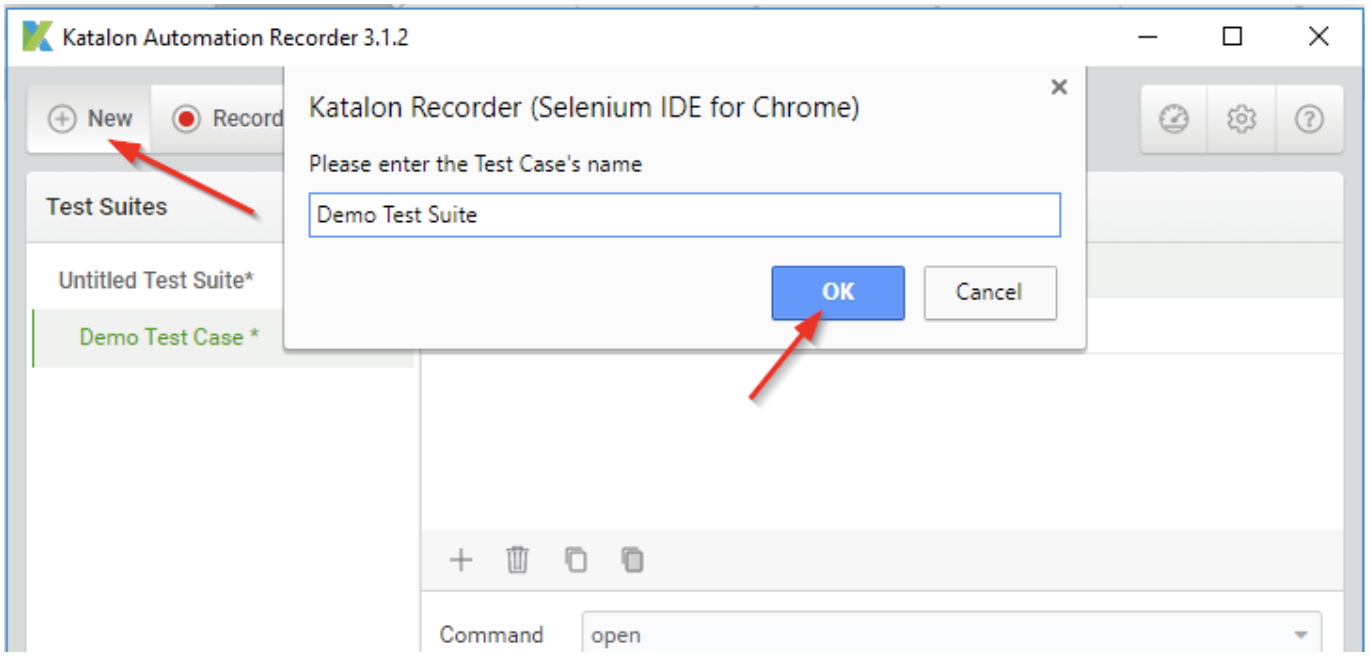
Click the “Add” button and enter the command you want to execute:
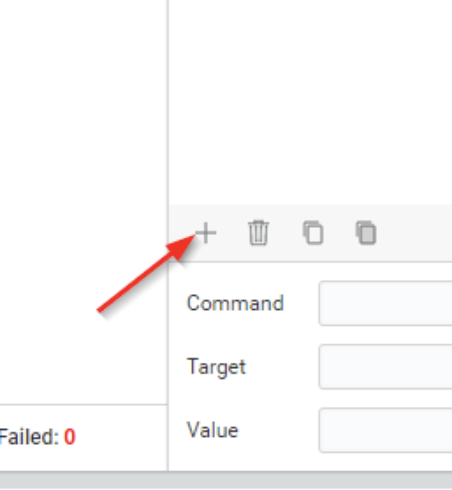
In the Reference section above, you can get detailed information on what each command does.
In the same way, run the following commands to complete the test case.

After completing the command, click the Play button to start the test case.

In the above image, you can see that all successfully completed commands are highlighted in green, with a console at the bottom of the screen with information on successful / unsuccessful execution of commands for the current test case.
Main functions
1) With this tool you can capture the necessary elements of a web application and record the actions performed with them. You can create new test cases, edit existing ones, and also reproduce automatic test cases. Katalon Recorder allows you to perform all these actions easily and quickly.
2) All features supported by Selenese are available in the Katalon Recorder
3) Test scripts for Selenium IDE can be imported into Katalon Recorder (in script mode) and exported for the programming languages and frameworks listed below.
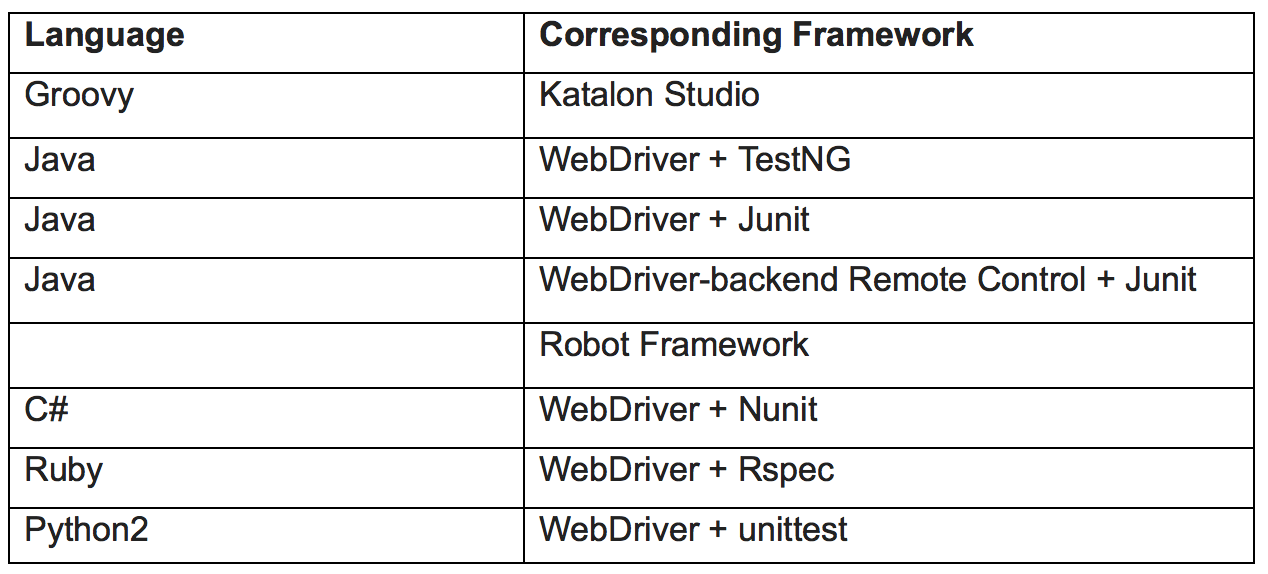
4) Katalon Recorder is supported by the latest versions of Firefox and Chrome.
5) This tool runs on the Selenium 3 core.
6) Several test cases can be combined into one test case. Such combined test cases will be executed as a complete test case.
7) Test cases can be imported into Katalon Studio - a completely free test automation tool that supports key-driven and data-driven approaches, TDD / BDD testing, API testing, and also includes features such as: using the Page Object pattern Model, management and recording of the testing process, writing extended scripts, parallel execution, performing CI integration and many other features!
8) Katalon Recorder allows you to record and play automated test scripts not only for Katalon Studio users, but also for those who use the outdated version of Selenium IDE and other popular open source frameworks.
Detailed description of the main functions
1) Toolbar. The toolbar consists of 6 buttons: “New”, “Record”, “Play”, “Export”, “Help” (Hint) and “Settings”:

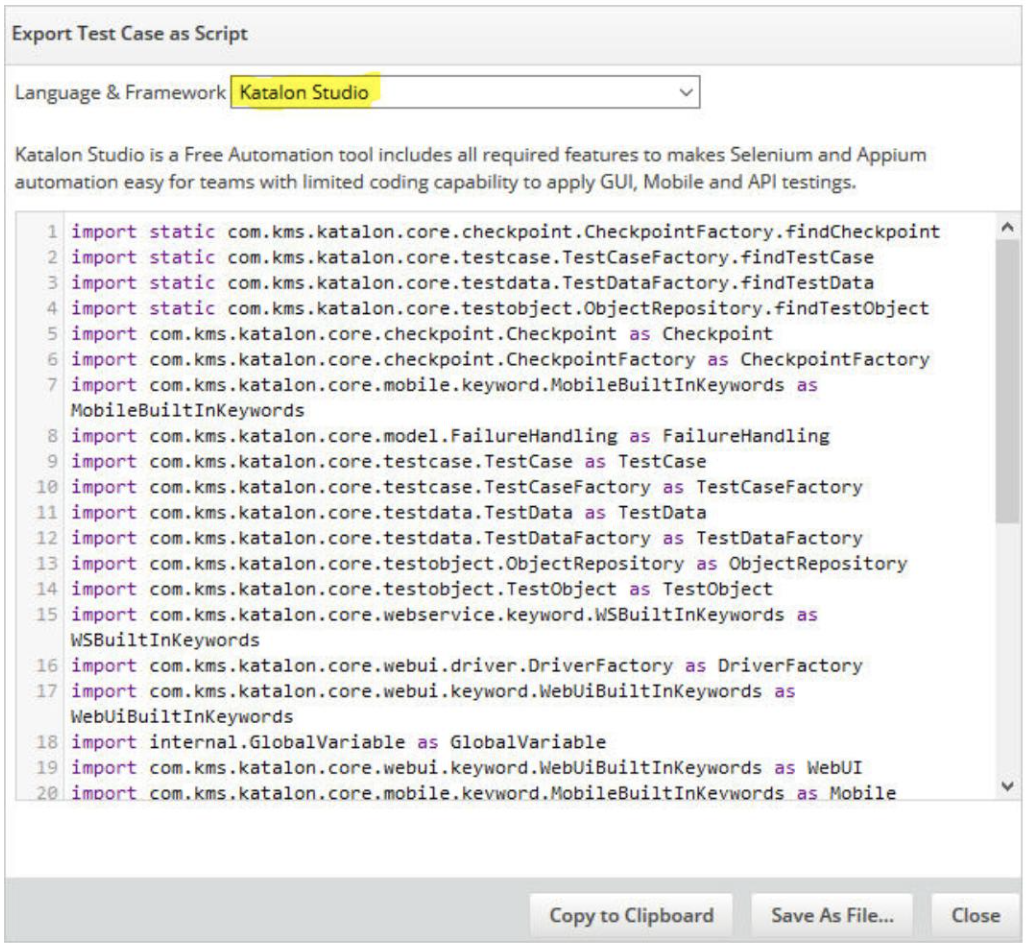
After that you can save the test script. Click “ Save As File ” to save the script as a Groovy file, as shown in the above image.

In addition, from the presented images it can be seen that, depending on the commands specified by the user, certain code will be displayed in the interface window.
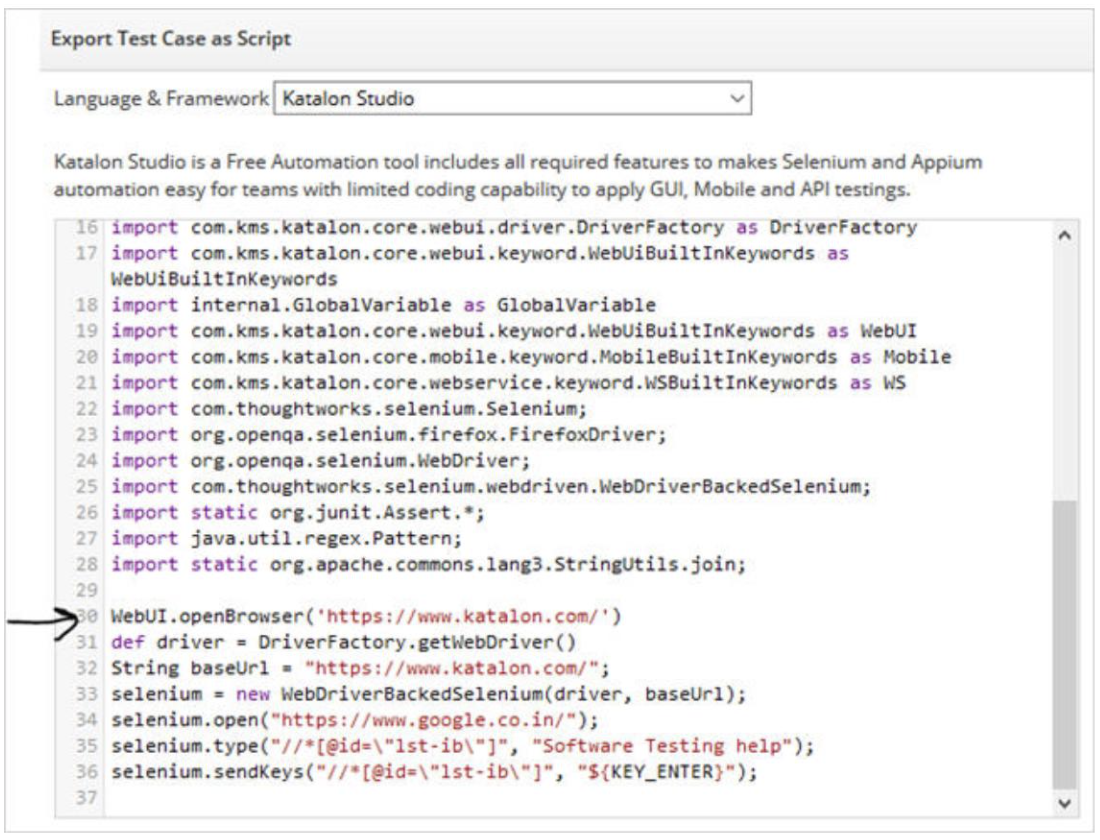
A similar feature is also found in the Selenium IDE in the “Source” section.
In the image below you can see that you can choose the desired programming language or framework:
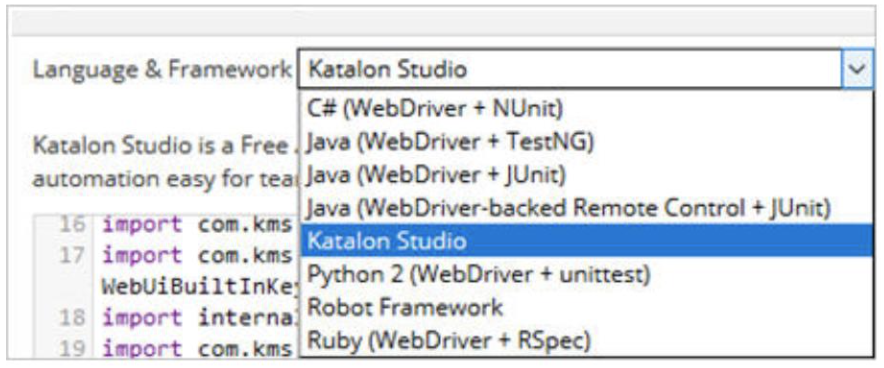
Changing a programming language or framework will automatically change the syntax of the script:
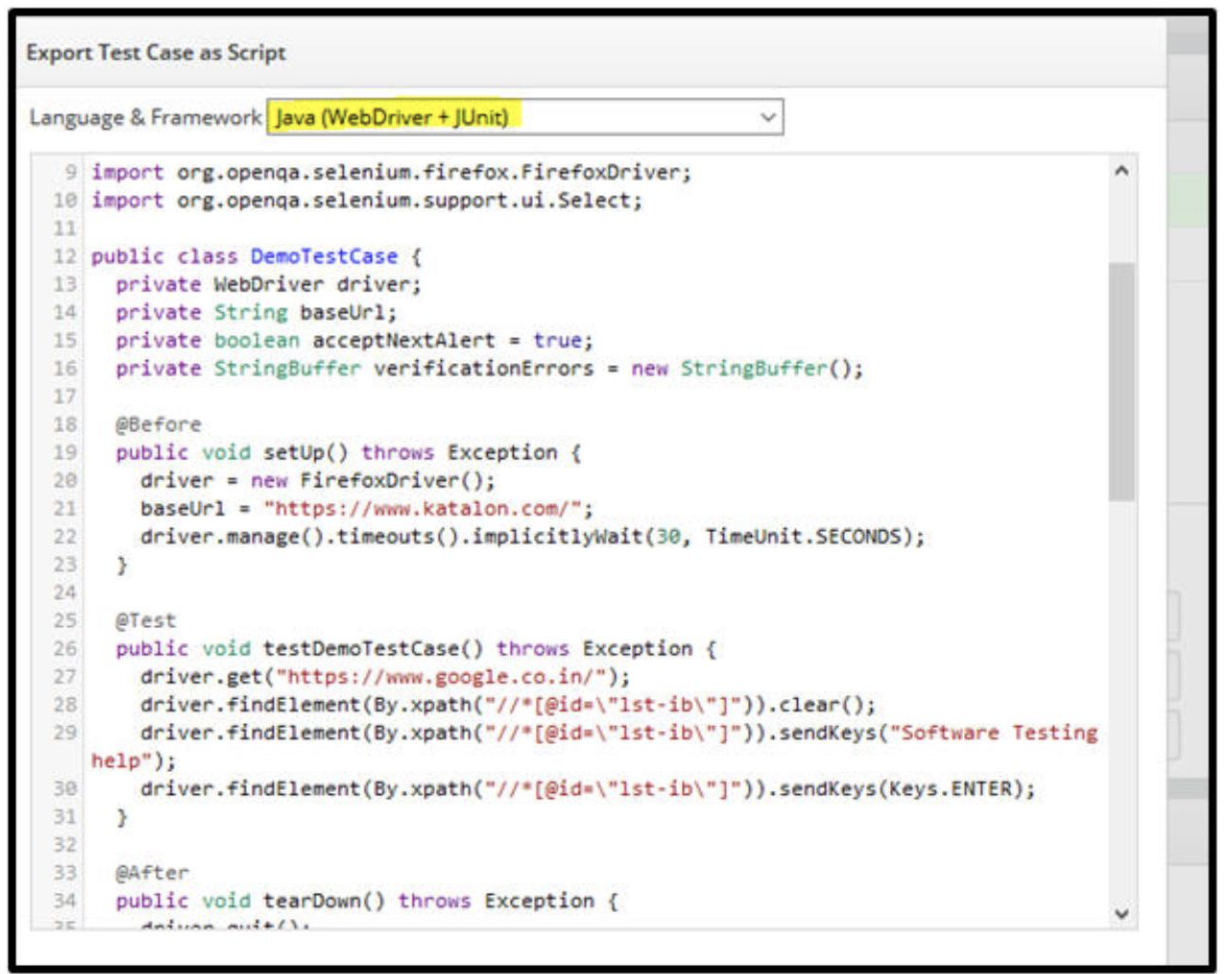
2) Test Case Explorer:
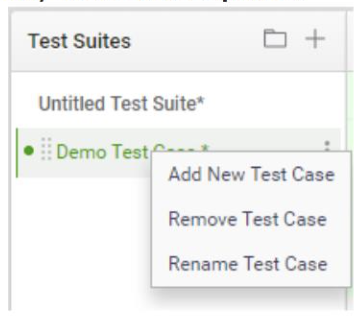
Test Case Explorer contains test cases. A test case may contain several test cases:
Right-click on the “Test Case” button to select one of three functions:
1. Add a new test case (Add New Test Case ').
2. Remove the test case (Remove Test Case).
3. Rename the test case (Rename Test Case).

Right-click on the “Test Suite” button to select one of four functions:
1. Save Test Suite As.
2. Close Test Suite.
3. Add a new test case to the test case (Add New Test Case).
4. Rename the test suite (Rename Test Suite).
3) Test cases window
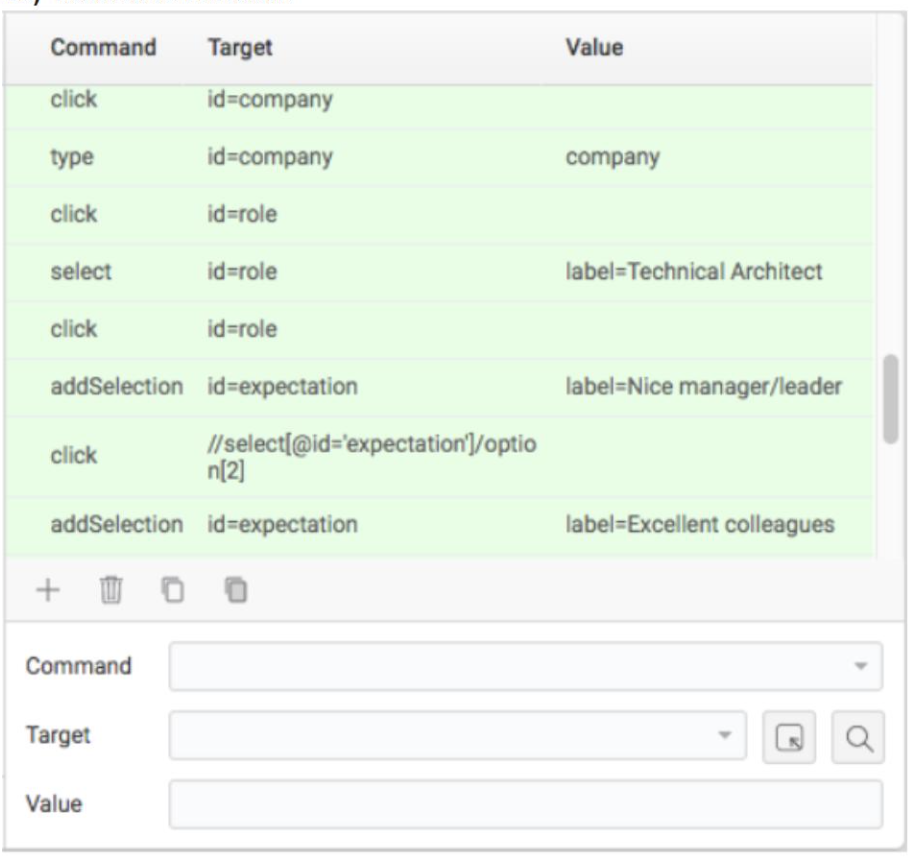
In the test cases window, you can add, delete, edit or start testing operations. Each of these operations contains a command, a target, and a value. To change the sequence of operations drag them with the mouse.
4) Tabs "Journal", "Help", "Options"

Log (Log)
The event viewer displays a log / report on the execution of the current test script. It displays all error messages that occurred during test execution, informational messages, as well as information on the progress of the testing.
Screenshot (Screenshot)
This tab displays all screenshots taken with the “captureEntirePageScreenshot” command during the execution of the current test case.
Help (Reference)
The Reference tab contains detailed information about the selected command. Use this information to select the desired type and parameters for the command.
Parameters (Variable)
The "Variable" tab (Parameters) provides information about the current command selected by the user. For information about the name, target, and value of a command, go to this tab during testing.
Katalon Analytics (Cloud icon)
Download the execution logs to Katalon Analytics to track the progress of the tests being performed, as well as to access the intelligent test control panel and reports.
Restrictions
Along with all the above advantages, this tool also has several disadvantages.
For example:
More about the tool:
Here you will find a short guide for Katalon Recorder.
Findings:
Thus, Katalon Automation Recorder is a great tool for test automation and a good alternative to Selenium IDE.
Katalon Recorder is supported by the latest versions of Firefox and Chrome (which will also be supported by later versions) and can be added as an extension for these browsers. This tool is an excellent and free alternative to Selenium IDE, as well as other similar open source frameworks.
Katalon Recorder is a convenient and powerful tool that supports the ability to record test scripts, in which the main features of Selenium IDE were portrayed for Chrome and Firefox.
Comparison of Selenium IDE and Katalon Recorder
The image below shows that all the basic functions of the Selenium IDE are also available for Katalon Recorder .
')
In fact, Katalon Recorder supports two additional frameworks: Robot Framework and Katalon Studio. In addition, this tool is compatible with the Groovy programming language.

Katalon Recorder is a great helper for developers whose work is largely dependent on Selenium IDE. It has a powerful integrated development environment for recording, debugging, and playing test scripts in Chrome and Firefox.
Installing Katalon Recorder
Below are download links for Katalon Automation Recorder for Chrome and Firefox:
Chrome Web Store
Firefox Add-on Store
This tool is easy to install. The following steps describe how to do this:

Click the “Add to Firefox” button, as shown in the above image, and shortly Katalon Recorder will appear on the toolbar of your Firefox browser (installation takes less than 10 seconds).

It looks like this:

Short presentation
Click the New button and specify the name of the new test case in the dialog box. Then, click “OK”.

Click the “Add” button and enter the command you want to execute:

In the Reference section above, you can get detailed information on what each command does.
In the same way, run the following commands to complete the test case.

After completing the command, click the Play button to start the test case.

In the above image, you can see that all successfully completed commands are highlighted in green, with a console at the bottom of the screen with information on successful / unsuccessful execution of commands for the current test case.
Main functions
1) With this tool you can capture the necessary elements of a web application and record the actions performed with them. You can create new test cases, edit existing ones, and also reproduce automatic test cases. Katalon Recorder allows you to perform all these actions easily and quickly.
2) All features supported by Selenese are available in the Katalon Recorder
3) Test scripts for Selenium IDE can be imported into Katalon Recorder (in script mode) and exported for the programming languages and frameworks listed below.

4) Katalon Recorder is supported by the latest versions of Firefox and Chrome.
5) This tool runs on the Selenium 3 core.
6) Several test cases can be combined into one test case. Such combined test cases will be executed as a complete test case.
7) Test cases can be imported into Katalon Studio - a completely free test automation tool that supports key-driven and data-driven approaches, TDD / BDD testing, API testing, and also includes features such as: using the Page Object pattern Model, management and recording of the testing process, writing extended scripts, parallel execution, performing CI integration and many other features!
8) Katalon Recorder allows you to record and play automated test scripts not only for Katalon Studio users, but also for those who use the outdated version of Selenium IDE and other popular open source frameworks.
Detailed description of the main functions
1) Toolbar. The toolbar consists of 6 buttons: “New”, “Record”, “Play”, “Export”, “Help” (Hint) and “Settings”:

- Click “New” if you want to add a new test case to the test suite.
- Click “Record / Stop” to start / stop recording the testing process.
- Click “Play” to complete the current test case.
- Click Play Suite to play one test suite.
- Click “Play All” to run all test cases.
- Click “Pause” to stop the operation.
- Click “Export” to enter the script mode to select a programming language or framework. Katalon Studio is selected by default.
- Click “Speed” to select the speed of the operation.
- If you are a Katalon Studio user, click “Settings” to open a window with settings for configurations and ports. Such users can change the default port of Katalon Studio to interact with the current browser.

After that you can save the test script. Click “ Save As File ” to save the script as a Groovy file, as shown in the above image.

In addition, from the presented images it can be seen that, depending on the commands specified by the user, certain code will be displayed in the interface window.

A similar feature is also found in the Selenium IDE in the “Source” section.
In the image below you can see that you can choose the desired programming language or framework:

Changing a programming language or framework will automatically change the syntax of the script:

- Click Help to open the Katalon Automation Recorder user guide page, which provides a detailed description of various functions.
- Click “Settings” to go to the port settings and configuration settings page.
2) Test Case Explorer:

Test Case Explorer contains test cases. A test case may contain several test cases:
Right-click on the “Test Case” button to select one of three functions:
1. Add a new test case (Add New Test Case ').
2. Remove the test case (Remove Test Case).
3. Rename the test case (Rename Test Case).

Right-click on the “Test Suite” button to select one of four functions:
1. Save Test Suite As.
2. Close Test Suite.
3. Add a new test case to the test case (Add New Test Case).
4. Rename the test suite (Rename Test Suite).
3) Test cases window

In the test cases window, you can add, delete, edit or start testing operations. Each of these operations contains a command, a target, and a value. To change the sequence of operations drag them with the mouse.
4) Tabs "Journal", "Help", "Options"

Log (Log)
The event viewer displays a log / report on the execution of the current test script. It displays all error messages that occurred during test execution, informational messages, as well as information on the progress of the testing.
Screenshot (Screenshot)
This tab displays all screenshots taken with the “captureEntirePageScreenshot” command during the execution of the current test case.
Help (Reference)
The Reference tab contains detailed information about the selected command. Use this information to select the desired type and parameters for the command.
Parameters (Variable)
The "Variable" tab (Parameters) provides information about the current command selected by the user. For information about the name, target, and value of a command, go to this tab during testing.
Katalon Analytics (Cloud icon)
Download the execution logs to Katalon Analytics to track the progress of the tests being performed, as well as to access the intelligent test control panel and reports.
Restrictions
Along with all the above advantages, this tool also has several disadvantages.
For example:
- There are a number of teams that are currently under development. For example: sendKeys is an experimental command. Probably in the future, this command will be replaced by another - typeKeys. Thus, there is a possibility that when using experimental commands, some test scripts will have to be updated.
- The tool does not have the function of displaying the base URL. In Selenium IDE, such a function was very convenient for initializing test cases in several different domains.
- In addition to the shortcomings described above, there are other errors in the tool. In the sections “Suggestions” and “Katalon Automation Recorder Bugs” you can find information about existing errors and how to fix them.
More about the tool:
Here you will find a short guide for Katalon Recorder.
Findings:
- This tool can be installed very easily and quickly.
- It is completely free.
- Easy to use. The "Reference" section provides useful information about how the commands work and when they should be used.
- The tool supports several programming languages and frameworks, which only increases its effectiveness.
- It contains almost all the functions present in the Selenium IDE.
- In addition, several new commands have been added to Automation Recorder, which are not found in the Selenium IDE, making it an even more effective tool.
- Ability to integrate with the intellectual testing report platform - Katalon Analytics.
- For testers who mainly used the Selenium IDE to perform automated testing tasks, Katalon Recorder can be a great help.
- Katalon Recorder is a more effective solution compared to some other alternatives to Selenium IDE. For example: unlike Kantu for Chrome, Katalon Recorder supports all the commands that were in the Selenium IDE.
- This tool is supported by the latest versions of Firefox and Chrome and will be supported by their subsequent versions.
- He has only a few small flaws. Nevertheless, they fade in comparison with a huge number of functions and features of this tool, as well as ease of its use.
Thus, Katalon Automation Recorder is a great tool for test automation and a good alternative to Selenium IDE.
Source: https://habr.com/ru/post/351544/
All Articles